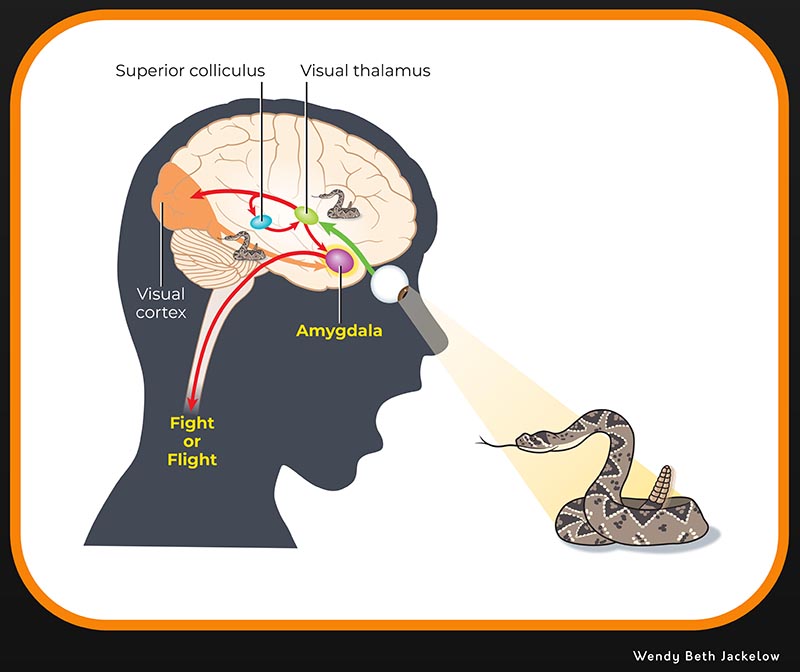How Fear Impacts Foraging
Freezing is a well-documented antipredator behavior that is mutually exclusive with foraging and generally occurs after a predator encounter.
Freezing has been recognized for decades as the first component of a series of defensive behaviors associated with fear and predation (freeze, fight, flight, immobility and has been reported to occur in response to predators in all vertebrate taxa.
Predators can stop feeding by triggering anxiety and fear circuits in the brain. The amygdala is an important brain area for experiencing both fear and anxiety, and is also involved in feeding behavior. The sight of a predator can directly interfere with feeding in a brain area called the superior colliculus (optic tectum in frogs and fishes) when both a predator and food are present at the same time. The predator is detected visually by the eyes and this information is then sent to the snake-detecting cells in the visual thalamus. Nerve cells from the thalamus travel to the hind brain to engage avoidance behavior and also inhibit bug-detecting cells in the optic tectum to inhibit prey capture. This mechanism for short-circuiting the bug detector cells ensures that frogs and toads deal with a predator first and food second.

Museum at Texas Tech University
-
Address
3301 4th Street, Lubbock, TX 79415 -
Phone
806.742.2490 -
Email
museum.texastech@ttu.edu
